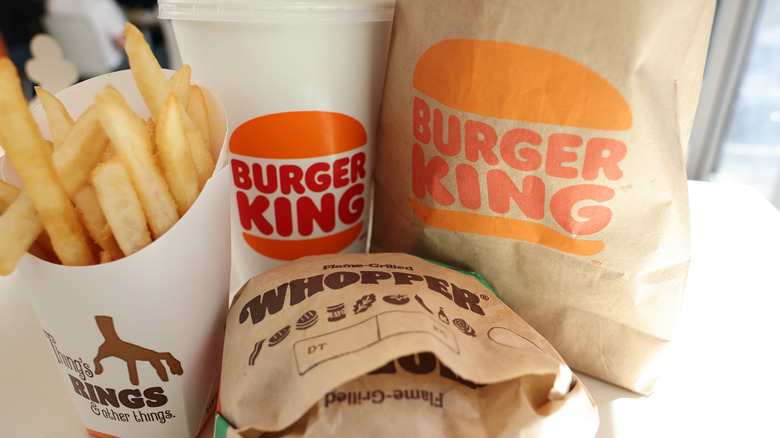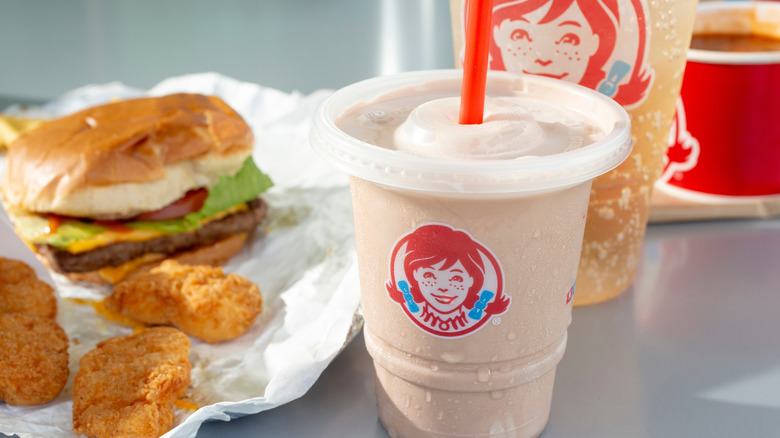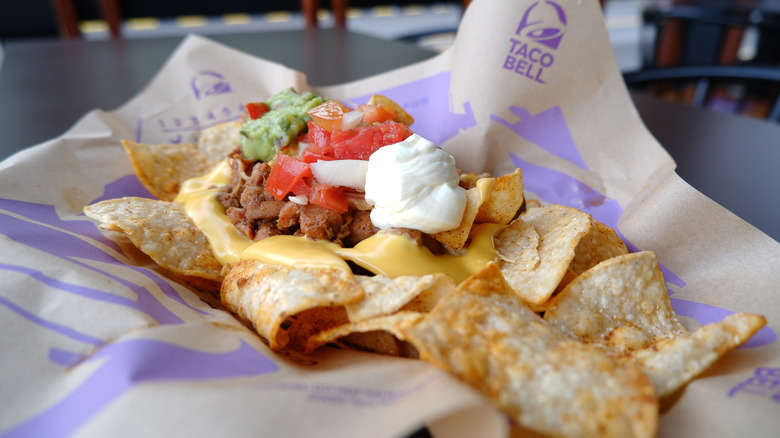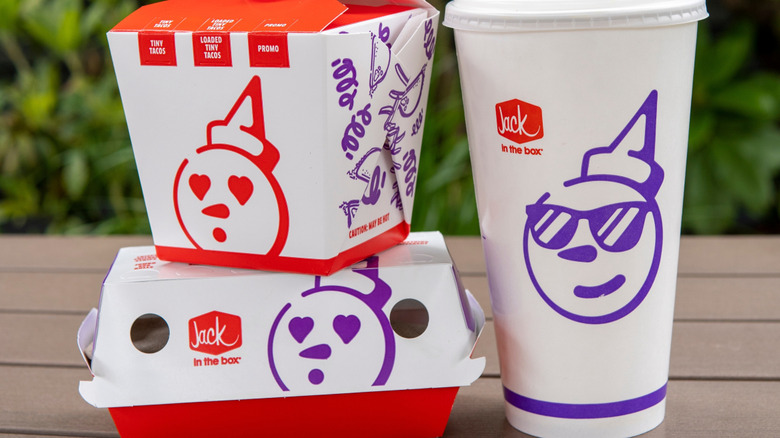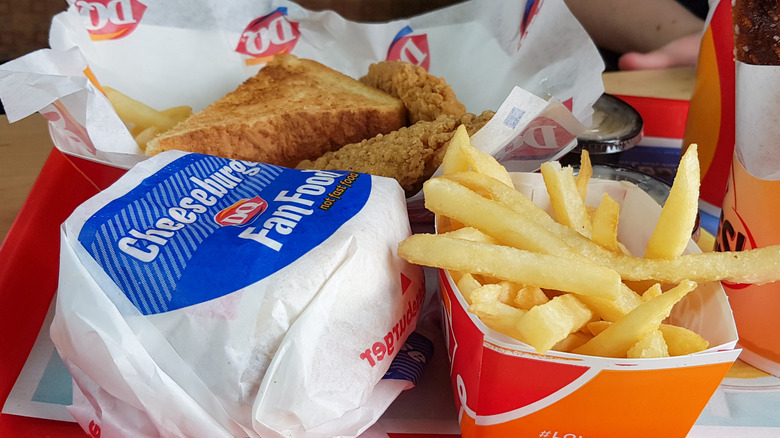7 Fast Food Chains That Are Completely Different From When They First Opened Decades Ago
Fast food wasn't always a part of the American landscape. During the 1900s, people were able to grab a bite to eat at luncheonettes (drug stores offering soda fountain drinks, sandwiches, soups, salads, and desserts). Then, in 1912, the first automat lunch room opened in Times Square. The lunch room offered rows of vending machines filled with sandwiches, pies, and comfort food. Insert a nickel and lunch was served.
When fast food restaurants expanded during the fifties, Americans welcomed the experience. Unlike the automats, these new restaurants offered families a chance to dine in or grab food from their cars. Soon, people enjoyed everything from fried chicken to tacos to burgers without having to stand over a hot stove.
Some of this nation's first fast food chains — Burger Chef, Red Barn, and Burger Queen — are no longer in business. Other restaurants — like McDonald's, Burger King, Wendy's, Taco Bell, Jack in the Box, Dairy Queen, and Carl's Junior — have gone through numerous changes over the years.
McDonald's
When the Golden Arches opened in 1940, the menu was quite simple – hamburgers for 15 cents, cheeseburgers for 19 cents, french fries for a dime, and malt shakes for 20 cents. Soda (orange, root beer, and Coke) was available along with milk and coffee.
McDonald's now has a diverse menu offering breakfast, different sandwiches, salads, and desserts. Its earlier restaurants were either walk-up establishments or drive-throughs. Today, McDonald's continues to modernize its restaurants and menus to appeal to customers.
Burger King
The Home of the Whopper started with the Insta-Burger King. In 1953, Keith C. Cramer and Matthew Burns sold burgers using their device — the Insta-Broiler. James McLamore and David R. Edgerton, two franchise owners, discovered the flaws with the Insta-Broiler and created a mechanized gas grill they named the Flame Broiler. Eventually, all Burger Kings would adopt the new grill.
Burger King continues to expand its menu beyond just burgers, fries, and shakes (both thick and giant thick) and redesign its restaurants. The goal is to be more convenient and effective while staying competitive in the fast-food market.
Wendy's
In 1969, Dave Thomas opened his first restaurant in Columbus, Ohio. The fast food hamburger joint, named for Thomas's daughter, quickly became known for square-shaped patties made from beef, and the quintessential Frosty. A year after opening, Thomas added the Pick-Up Window — the modern concept of a drive-thru window. By the 80s, Wendy's had over 2,000 stores, a more diverse menu, and a successful ad campaign (anyone remember "Where's the Beef?").
Over the years, Wendy's has gone through a brand transformation. It's revamped its restaurants, its menu (with expanded breakfast offerings, seasonal and limited selections, and new Frosty flavors), and modernized its ad campaigns.
Taco Bell
When Taco Bell first opened in 1962, it was totally focused on Mexican-inspired foods — frijoles, tostadas, chili burgers, burritos, and tacos — and everything was sold at 19 cents each. In 2015, Taco Bell introduced its Cantina concept (a more upscale dining experience). As of 2025, the latest Cantina to open is in downtown Los Angeles. You can have a frozen Baja Blast at any Taco Bell, but the Cantinas offer a boozy version with your choice of tequila, vodka, rum, and whiskey. Beer, frozen margaritas, and piña coladas are available, too.
Jack in the Box
Robert O. Peterson founded Jack in the Box in 1951 in San Diego, California. He pioneered the two-way intercom system for drive-thrus. The menu was seriously limited compared to today's offerings — large drinks for 15 cents, hamburgers for 24 cents, and cheeseburgers for 29 cents. You could also get french fries, onion rings, tacos (which debuted in 1954), shrimp, chicken, apple turnovers, and ice cream. In the 70s, Jack in the Box introduced the Bonus Burger (two patties, American cheese, Jack's Secret Sauce, shredded lettuce, and two pickle slices on a three-piece bun) to compete with McDonald's Big Mac.
As Jack in the Box expanded and changed its targeted demographic, so did its menu. In the 80s, the fast food chain blew up its clown mascot only to bring him back again.
Dairy Queen
John Fremont McCullough opened Dairy Queen in 1940 to sell soft-serve. In the late 1950s, Dairy Queen expanded its menu to include burgers, hot dogs, and french fries. Seven years later, the "Brazier" concept (full-service restaurants) was born.
The Blizzard was introduced in 1985 by a franchisee. Mixing super thick soft-serve with fruit and candy was a hit from day one. But did you know that DQ can't call its soft-serve 'ice cream'? The US Food and Drug Administration has stipulations for what can be called ice cream. A frozen dessert must have at least 10% milkfat and weigh a minimum of 4.5 pounds per gallon. Dairy Queen only has 5% milkfat.



